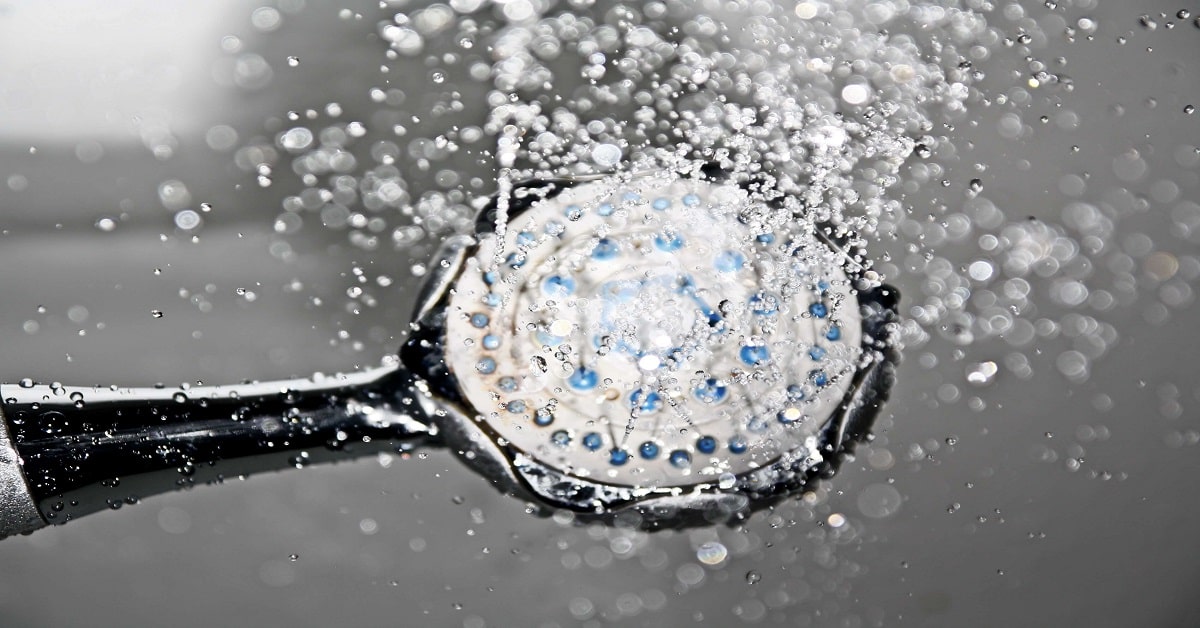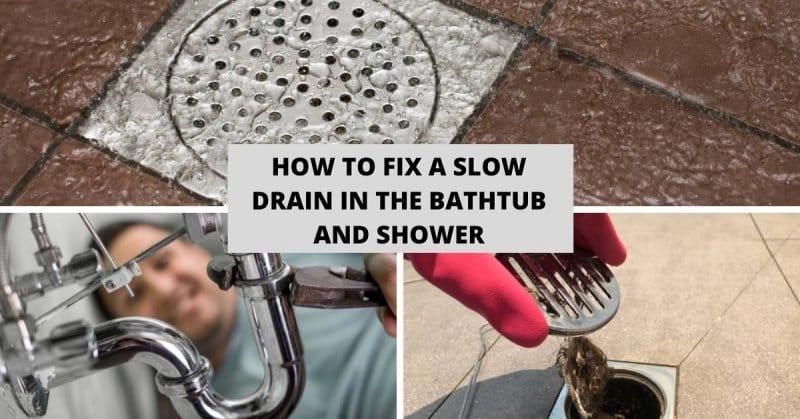Fixing a slow drain by using common household items is the conclusion. Just follow these straightforward instructions using basic tools with a little know-how and you should be golden.

Most of the time you can quickly fix the problem of having a slow drain yourself without the need for calling in professionals. Our previous article “Sewer Smell In Your Bathroom? Learn How To Get Rid Of It” talks about the need to check for clogged drains among other bathroom solutions. If you have already read through that then you should be aware of several answers on how to fix a slow drain which I will be discussing here once again, so don’t call your plumber just yet.
Thank you for reading this post, don't forget to the best blogger Guy About Home who offers the best garden and home improvement tips! If you are a home decor and design fan, don't miss the tips on home ideas. If you are a home garden owner, then you might be interest in our complete guides to house plants!
Why Using Common Household items to fix a slow drain
This is an approach using materials you usually use at home, so this will save you some money and the trouble of having to go out and buy chemical drain cleaners.
How to fix a slow-draining kitchen sink: using pour hot water
Some recommend pouring a kettle of boiling water directly into the drain. Using boiling water to flush out the clog is a good idea if you have steel pipes throughout your home. This also works if your tubes are made of CPVC since it is a thermoplastic that can withstand high temperatures.
However, this can be a terrible idea if your pipes are made of PVC pipes, even if you have just a small section of your pipes made from PVC then DO NOT use boiling water.
PVC pipes are only rated to handle water with temperatures below 140 degrees Fahrenheit. Boiling water which is 212 degrees Fahrenheit will destroy your pipes, creating leaks and loose sections of piping. Even if you are sure you have metal pipes installed but use rubber fittings to connect parts, the boiling water may cause damage to those specific joints. It is best to use very hot water which is below the boiling point, around 175 degrees Fahrenheit would be perfect for this purpose.
If this does not do the trick, then get some ingredients from your kitchen to get the drain cooking.
How to fix a slow-draining bathroom sink: using baking soda & vinegar
Step 1: mix
Pour a litre of hot water down the drain, then add half a cup of baking soda, let it sit for a couple of minutes later add vinegar to the mix. Seal the drain with a drain stopper and wait about ten minutes. This will force the chemical reaction of the mixing ingredients downward and through the blockage inside your pipes.
If you remember your old science experiment with the erupting volcano using the same ingredients as a kid, now you actually will utilise the same chemical reaction to clear the clog in your drain. Once the requisite wait time has elapsed just remove the drain stopper and turn on your faucet. The water should go down the drain with ease.
Step 2:Fish it out
First remove the drain strainer by just lifting them up and out of your sink, some just need to be unscrewed. Then you can use a drain snake if you have one and if you don’t, it would be good to purchase so that you have one whenever the need arises. In case you don’t own one you can improvise and use a wire coat hanger and fashion your drain snake. Just straighten it out then take one end and make it into a hook, you may need some pliers for that.
Once you have your tool ready, insert it inside the drain it all the way inside the pipes until you feel the blockage, turn clockwise at the handle to make the hooks latch onto any foreign material that is lodged causing the obstruction. When you feel some resistance when you try to pull then that means you just caught the clump and now you just need to pull it out.
Step 3:Plunge it
I know what your thinking, most of us are only used to plungers being used for our thrones but no there is a specific kind used for sinks. This would be the one that is cup-shaped not flanged. Be sure to remove any drain strainers or stoppers before proceeding and then carefully cover the drain with the plunger then fill the sink with two inches of water.
Try your best to create an airtight seal between the drain and the plunger by pushing firmly down onto the sink. Use some strength to make swift plunges to remove the clog, pump seven times and check to see if the water is going down quicker than before. Continue until you have wholly sucked out the clog.
Step 4:Check the Trap and use a Cable Auger
This can be a little more challenging than the different methods indicated above. If you have some experience using a pipe wrench or cable auger, then this should be a breeze.
Open the cabinet under your sink, slide an empty bucket under the P trap(the U – shaped pipe) and try disassembling the trap by hand.
If it does not budge, use a pipe wrench or monkey wrench to get the slip nuts lose enough for you to be able to remove it entirely. Check if the clog is in located in the trap, remove it and then reinstall the trap, run water to check of the clog is gone.
If not, remove the straight pipe that connects the trap to the wall then use the cable auger and insert it into the pipe located inside the wall. Proceed to push the cable auger into the stub pipe until you hit the clog. Auger the stub pipe until you feel you have removed all the clogs and debris, cleaned the cable as you retract it from the wall and reinstall all the pipes. Run hot water to check of the clogged is removed. This details on how to use a cable auger to remove clogs.
How to fix a slow shower drain?
Dealing with a Slow shower drain can be handled similarly to how you unclog sinks. You can try using the above methods and if those do not work here a couple more ways on how to fix a slow shower drain.
Step 1: Bleach it out
since bleach can dissolve organic material, pour a bottle of bleach down the shower drain, wait about 30 mins then run hot water. This is a cheaper solution than buying chemical drain cleaners.
Step 2:Chemical Drain Cleaners
If hot water, bleach or the vinegar did not flush out the clog then you can try purchasing a robust chemical drain cleaner like Drano. Just pour it straight into the clogged drain, and this should dissolve any material blocking the flow of water. You would need to wait fifteen minutes for it to do its work then run hot water to flush everything down.
How to fix a slow draining bathtub drain?
Bathtub drains can be adjusted by first removing the strainer and stopper and then proceeding through the five different methods of clearing a slow drain above. These options also work great on unclogging bathtub drains as well.
Conclusion:
Fixing a slow drain can be easy to deal with. Just pour your troubles away by using hot water, baking soda and vinegar mix or attack it with chemical drain cleaners. Next up would be using the drain snake and fixing the problem from the top view of the drain and using a plunger for either the bath or sink.
Last option is to go under and to remove the traps to auger it out.
If these do not work make sure to hire a licensed, insured plumber to help you with all your plumbing needs.
For more amazing ideas you can have, visit Guy About Home today or you can check the related blogs:




